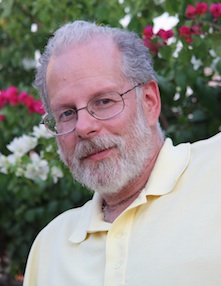By Melanie Ojwang
McDaniel College hosted Larry A. Silver, Farquhar Professor of Art History at the University of Pennsylvania, on September 14 and 15. McDaniel College, home of the Delta of Maryland Chapter, was Silver’s first stop on his tour as a ΦBK Visiting Scholar. Silver presented a lecture entitled “Marked and Modern: 20th-Century Jewish Artists.”
Held in McDaniel Lounge, the lecture focused on the examination of three Jewish artists and how their Jewish identity affected their art and perceptions of it. Silver labeled the Jewish identity as a marked one and centered his analysis on the concept that, regardless of whether or not an artist accepts or highlights a marked aspect of their identity, this identity is always attached to both the artist and their work.
The artists, Marc Chagall, Ben Shahn, and Mark Rothko were all born in Eastern Europe around the turn of the century, but that is about where the similarities end. Their work ranged in form and content, but whether examining Shahn’s political murals, Chagall’s overtly religious imagery, or Rothko’s archetypal art, Silver could find threads of their marked identity. He argued that all three infused Jewish ideals and values within their work, and that it would be impossible for them not to.
“People write out of what they know,” he said. Artist of all mediums create from the familiar and so inevitably aspects of their background will be embedded in their art. For some, this is no problem. Silver explained that some artists even see an additional “benefit” in being marked; one can capitalized on being viewed as exotic.
But others reject labels. Labels can allow outsiders to define what it means to be in a marked group. This can lead to an artist being perceived as an exception to the rule, “pretty good for a…,” or pigeonholed into producing a certain type of art.
A marked artist is often stuck between these two sides, acceptance or rejection, and their choice can waiver throughout their career. Chagall started his career with images meant to provoke Jewish nostalgia and recognition of folktales. After painting Christ as a Jewish martyr, he began to shift to include more Christian imagery over time. In contrast, Shahn focused on themes of political activism; initially his work highlighted the path of immigrants, namely Jewish ones but his later art moved away from this imagery. Rothko started his career later in life but aimed to create art that appealed to spirituality; his work inspired the creation of a nondenominational chapel. All three explored religion and spirituality differently in their works, but Silver argued that they were all reframing cultural values stemming from their common root, Judaism.
“However much an artist wants to escape, they are marked by this marginalized identity,” Silver emphasized. It is a question of perception, how society identifies the artist based on appearance, social agendas, or anything else. An individual then has to navigate the expectations of the insiders of the marginalized groups and of the outsiders.
As a minority, Silver stated, artists of marked groups are forced to form a sense of identity and have no other option than to negotiate majority culture in their work and in their lives.
Melanie Ojwang is a senior at McDaniel College majoring in English and sociology. McDaniel College is home to the Delta of Maryland Chapter of Phi Beta Kappa.




